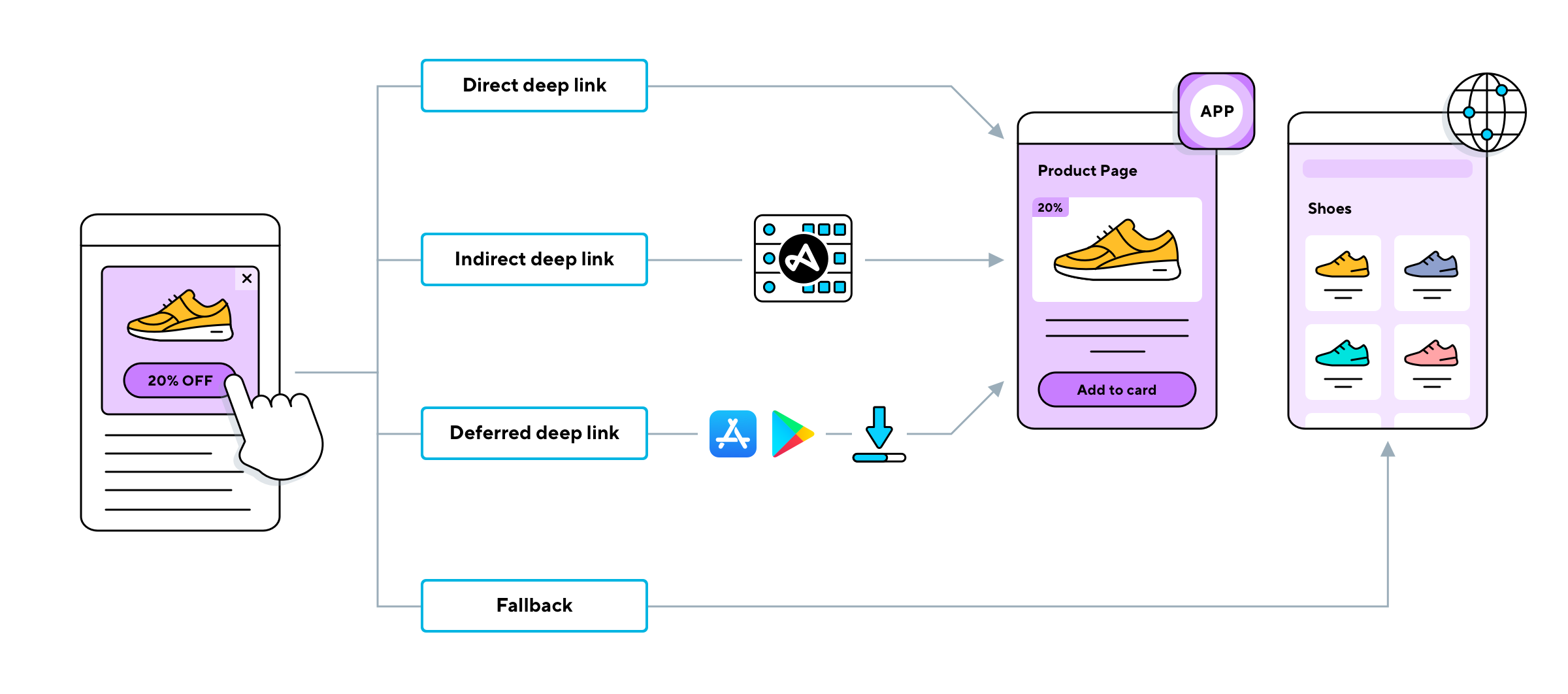Hey there, tech enthusiasts! Brace yourself because we're diving deep into a topic that’s been buzzing around the web lately. www.deephotlink is not just another random term floating around; it’s a game-changer in how we interact with digital content. Imagine being able to access files, data, or resources directly from their source without jumping through hoops. Sounds cool, right? Well, buckle up because we’re about to explore this fascinating world together. And trust me, by the end of this article, you’ll have a whole new perspective on what deep hotlinking can do for you.
Now, before we get too carried away, let’s set the stage. The concept of deep hotlinking has been around for a while, but it’s only recently started gaining traction. It’s all about creating direct links to specific resources on the web, bypassing the usual middlemen. Think of it as a shortcut to the good stuff, saving you time and effort. But hold on, there’s more to it than just convenience. Deep hotlinking also raises important questions about data privacy, security, and ethical usage. We’ll dive into all of that later, but first, let’s lay the groundwork.
One thing’s for sure—this isn’t your average tech trend. The implications of deep hotlinking are far-reaching, affecting everything from content creators to everyday internet users. So, whether you’re a developer looking to optimize your website or someone who just wants to understand the inner workings of the web, this article’s got something for you. Let’s jump in!
Here’s a quick roadmap of what we’ll cover:
- What is DeepHotlink?
- A Brief History of DeepHotlink
- How It Works
- Benefits of Using DeepHotlink
- Challenges and Risks
- Legal Issues Surrounding DeepHotlink
- Best Practices for Safe Usage
- Tools and Platforms
- Future Trends in DeepHotlink
- Wrapping It All Up
What is DeepHotlink?
Alright, let’s get down to business. DeepHotlink refers to the practice of creating direct links to specific files or resources on the web, rather than linking to the main page or homepage of a website. This allows users to access content more efficiently, skipping unnecessary steps. For instance, instead of visiting a gallery page and then navigating to the image you want, a deep hotlink takes you straight to the image itself. Pretty neat, huh?
But here’s the kicker—deep hotlinking isn’t just about convenience. It’s also about leveraging the full potential of the web’s interconnectedness. By linking directly to the source, you’re tapping into a vast network of data and resources that can enhance your online experience. However, as with any powerful tool, it comes with its own set of challenges and responsibilities. We’ll touch on those later, but for now, let’s focus on understanding the basics.
Why is DeepHotlink Important?
In today’s fast-paced digital world, efficiency is key. Deep hotlinking streamlines the way we access information, making it faster and more direct. For businesses, this can mean improved user engagement and higher conversion rates. For individuals, it means saving time and getting straight to what matters. Plus, with the rise of cloud storage and file-sharing platforms, deep hotlinking has become an essential skill for anyone looking to navigate the web like a pro.
A Brief History of DeepHotlink
Believe it or not, deep hotlinking has been around since the early days of the web. Back in the 90s, when the internet was still in its infancy, developers started experimenting with direct links to images, videos, and other media files. It was a game-changer at the time, allowing websites to display content from other sources without having to host it themselves. This practice quickly gained popularity, especially among content creators who wanted to showcase their work without worrying about storage space.
However, as the web grew more complex, so did the challenges associated with deep hotlinking. Issues like bandwidth theft, copyright infringement, and data security began to surface, prompting discussions about the ethical implications of this practice. Despite these challenges, deep hotlinking has continued to evolve, adapting to the changing landscape of the internet. Today, it’s a fundamental part of how we interact with digital content, with new tools and technologies emerging to enhance its functionality.
How It Works
So, how exactly does deep hotlinking work? At its core, it’s all about creating direct URLs that point to specific resources on the web. These URLs typically include the file path and extension, allowing browsers to locate and retrieve the desired content. For example, a deep hotlink to an image might look something like this: www.example.com/images/photo.jpg. Simple, right?
But there’s more to it than just slapping together a URL. To ensure smooth operation, several factors need to be considered, such as server configuration, file permissions, and caching policies. Additionally, websites can implement measures to prevent unauthorized hotlinking, such as requiring referral headers or using content delivery networks (CDNs) to manage traffic. Understanding these technical aspects is crucial for anyone looking to harness the full power of deep hotlinking.
Key Components of DeepHotlink
- URL Structure: The foundation of any deep hotlink, ensuring accurate and efficient content retrieval.
- Server Configuration: Managing access permissions and optimizing performance for seamless user experience.
- Caching Policies: Enhancing speed and reliability by storing frequently accessed files locally.
Benefits of Using DeepHotlink
Now that we’ve covered the basics, let’s talk about the perks of deep hotlinking. For starters, it’s a time-saver. Instead of sifting through multiple pages to find what you’re looking for, a deep hotlink gets you there in one click. This is especially useful for large websites with complex navigation structures. Additionally, deep hotlinking can improve search engine optimization (SEO) by providing direct access to valuable content, potentially boosting your site’s visibility in search results.
From a business perspective, deep hotlinking can enhance user engagement by offering a more streamlined browsing experience. It also reduces server load by leveraging external resources, which can lead to cost savings. Plus, with the increasing demand for mobile-friendly websites, deep hotlinking offers a practical solution for delivering content quickly and efficiently to users on the go.
Advantages at a Glance
- Improved user experience
- Enhanced SEO performance
- Reduced server load
- Cost savings
- Mobile-friendly content delivery
Challenges and Risks
Of course, where there’s a benefit, there’s often a challenge. Deep hotlinking is no exception. One of the biggest concerns is bandwidth theft, where websites inadvertently use excessive resources by allowing external links to their content. This can lead to increased hosting costs and slower performance for both the host and the visitor. To mitigate this risk, websites can implement hotlink protection measures, such as requiring referrer headers or using token-based authentication.
Another issue is copyright infringement. Deep hotlinking can sometimes bypass licensing agreements, leading to legal disputes. It’s important for users to respect intellectual property rights and only link to content that is explicitly authorized for public access. Lastly, there’s the matter of data security. Direct links to sensitive information can pose a risk if not properly secured, making it essential to implement robust encryption and access controls.
Addressing the Challenges
- Implementing hotlink protection measures
- Respecting copyright and licensing agreements
- Enhancing data security through encryption
Legal Issues Surrounding DeepHotlink
When it comes to deep hotlinking, the legal landscape can be a bit murky. While it’s not inherently illegal, there are certain practices that can land you in hot water. For instance, linking to copyrighted material without permission is a big no-no. Similarly, using deep hotlinks to circumvent paywalls or subscription models can violate terms of service agreements. It’s crucial for users to familiarize themselves with the legal implications of deep hotlinking and act responsibly.
On the flip side, some argue that deep hotlinking is a fundamental aspect of how the web operates and should be protected under fair use principles. This debate continues to evolve as new technologies and legal frameworks emerge. In the meantime, it’s always a good idea to err on the side of caution and seek legal advice if you’re unsure about the legality of a particular deep hotlink.
Best Practices for Safe Usage
So, how can you enjoy the benefits of deep hotlinking while minimizing the risks? Here are a few best practices to keep in mind:
- Always seek permission before linking to copyrighted content.
- Implement hotlink protection measures on your own website to prevent abuse.
- Use secure protocols (HTTPS) to protect sensitive data.
- Regularly monitor your site for unauthorized hotlinks and take action if necessary.
- Stay informed about legal developments and adjust your practices accordingly.
By following these guidelines, you can ensure a safe and responsible approach to deep hotlinking, maximizing its potential while minimizing the risks.
Tools and Platforms
Now, let’s talk about the tools and platforms that can help you make the most of deep hotlinking. There are several options available, ranging from simple URL builders to advanced content management systems. Some popular choices include:
- Bitly: A URL shortening service that also offers analytics and tracking features.
- Google Cloud Storage: A powerful platform for hosting and sharing large files with direct links.
- Amazon S3: A scalable storage solution that supports direct linking and access control.
These tools not only simplify the process of creating deep hotlinks but also provide additional features like performance monitoring and security enhancements. Whether you’re a developer or a casual user, there’s a tool out there to suit your needs.
Future Trends in DeepHotlink
Looking ahead, the future of deep hotlinking is bright. As technology continues to advance, we can expect to see new innovations that enhance its functionality and security. For example, blockchain-based solutions could offer a decentralized approach to content sharing, ensuring transparency and accountability. Additionally, advancements in artificial intelligence (AI) could lead to smarter algorithms for detecting and preventing unauthorized hotlinking.
Another trend to watch is the growing emphasis on data privacy and security. With regulations like GDPR and CCPA becoming more stringent, users will demand greater control over how their data is accessed and shared. This could lead to the development of new protocols and standards for deep hotlinking that prioritize user privacy and protection.
Wrapping It All Up
And there you have it—a comprehensive look at the world of deep hotlinking. From its humble beginnings to its current status as a key component of the web, deep hotlinking has come a long way. While it offers numerous benefits, it also comes with its share of challenges and responsibilities. By understanding the basics, following best practices, and staying informed about legal developments, you can harness the power of deep hotlinking to enhance your online experience.
So, what are you waiting for? Start exploring the possibilities of deep hotlinking today! And don’t forget to leave a comment below sharing your thoughts or questions. Who knows, you might just inspire the next big innovation in this exciting field. Until next time, stay curious and keep learning!


